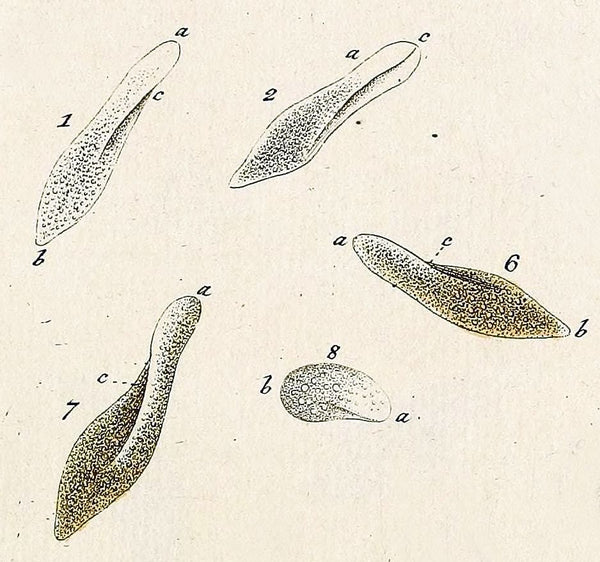- Continue Shopping
- Your Cart is Empty
What happens in the leaf litter bed..stays in the leaf litter bed?
As you know by now, I sort of obsess over the way the natural habitats of our fishes function, as both a physical environment and food resource. And nowhere do we see these two characteristics come together as completely and elegantly as in the litter beds of tropical streams.

In areas like Amazonia, these litter beds comprise a significant percentage of the natural aquatic ecosystems, and are home to a surprisingly diverse and dynamic population of fishes. They not only use the leaf litter and accumulated botanical materials in these beds as a shelter from predators, they incorparate it and the materials/organisms within it as a food source.

In one study I encountered, the primary consumers (ie; fishes!) were found to take mainly detritus and fungi -two sources of food that we have in abundance in aquariums-and it was concluded by the researchers that the so-called allochthonous inputs were the main source of energy and nutrients for the ecosystem itself.
So, what are the implications for leaf litter in our aquariums? I think that they're similar. We have decomposing leaves and other botanical materials, which serve as "fuel" for the growth of fungi and microorganisms...which, in turn, provide supplemental food for our fishes.

Now, in the aquarium, we've long vilified detritus as a destroyer of water quality; an impediment to successful aquariums. And the reality is that, in a well-managed aquarium, "detritus" is an essential food source for many organisms and plants. Like anything else in a closed system, if it's not allowed to accumulate unchecked, I personally believe its benefits for the animals we keep far outweigh any perceived disadvantages of having it present.

And fungi? Well, fungi are always in our systems...We may not notice them all the time, but they're there. We often see them when we're "aging" or "curing" wood for use in our aquascapes. Most hobbyists are revolted by them; they're kind of an affront to our aesthetic senses! And yet, as outlined in many scientific studies of the natural habitats of our fishes, they're an invaluable component of the food chain!
Again, it's a real mental shift that we as hobbyists have to make. Sure, there will always be a lot of people that don't like the look of brown water, decomposing leaves, biofilms and fungi in their aquariums. It's a radically different look than what we've come to accept an aquarium "should" look like for the better part of the century.

And I certainly cannot fault anyone for not enjoying the aesthetics of our aquariums...It's not for everyone. However, an interesting observation I've made over the years by both "uninitiated" hobbyists and non-hobbyists upon seeing a blackwater, botanical-style aquarium for the first time is an amazing appreciation for "how natural" they look. Iv'e heard this over and over an over again!

I am excited that so many hobbyists are jumping I and realizing the functional and aesthetic value of leaf litter and botanicals in their aquariums. I'm particularly excited to see more and more fishes which are found in- or spend a significant part of their lives in- leaf litter, such as my faves, Crenuchus spilurus, the "Sailfin Tetra!"
Another class of fishes which we are able to really study as never before in the aquarium is the so-called "Darter Characins." Many (not all) species are ecologically adapted to life in leaf litter beds, where they forage for detritus, fungi, insect larvae, and microorganisms which reside there. In years past, when these fishes were available to the hobby, we had to spend a lot of effort to get them to eat prepared foods.

These fishes are becoming more and more available all the time, and with a growing worldwide interest in the blackwater, leaf-litter habitats from which many species hail, I can see interest only increasing, and potential husbandry- and spawning- breakthroughs occurring regularly!

And with more aquarists expressing interest in studying and replicating these unique habitats, we are seeing a greater variety of botanical-style aquariums, which are actually designed around fishes which come from them.

And we've been playing with leaf litter in our brackish-water systems, too. And the creatures which reside in these habitats display remarkably different behaviors in a replication of the habitat than we see them display in non-botanical-style aquariums.

It's a big, wide-open field for experimentation and breakthrough. And so many opportunities to express our creativity and skills, I can only imagine an entire "sub-speciality" of leaf litter-centric aquariums cropping up over the next few years!
So, what happens in the leaf litter beds of Amazonia, for example...may not stay in the leaf litter beds!
Let's hope!
Stay creative. Stay studious. Stay excited. Stay engaged. Stay diligent...
And Stay Wet.
Scott Fellman
Tannin Aquatics









Scott Fellman
Author